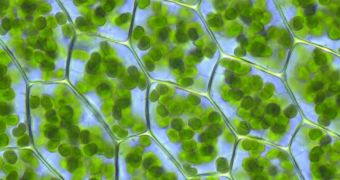A team of experts believes it may have just developed a way of using nanoscale wires for conducting artificial photosynthesis. If scalable and affordable, the new method could innovate global energy production.
The reason why nanowires are used is the fact that they have demonstrated the ability to split water molecules apart into their basic components, hydrogen and oxygen.
Scientists believe that being able to have this capability included inside a battery would be one of the first and also most important steps towards obtaining efficient and affordable chemical storage abilities.
The end goal of investigations such as this one is the production of storage materials that could contain the electric energy output of power plants utilizing alternative energy.
Such facilities, which either run on wind or sunlight, only output energy during the day, or during periods of high wind, respectively, which means they don't have a steady production capability.
Taking this line of though a step further, this means that national power grids are placed under a lot of strain every time alternative energy facilities kick into gear.
The excess power can damage grid components, and also destabilize the system as a whole. But having storage devices of the aforementioned nature could ensure that this never happens again.
Basically, research team are moving towards creating a system that would ensure electricity produced by solar power plants and wind farms is being fed into the grid gradually, and a constant pace.
The new wires play an important role in this because they can imitate one of nature's essential phenomenon, photosynthesis. Using this process, plants convert carbon dioxide into oxygen, allowing for complex life to exist on this planet.
The nanowires make artificial photosynthesis very efficient, something that the scientific community has been after for years.
The new constructs are made out of titanium dioxide (TiO2), and have large surface areas. This allows for them to be mounted on sensors that absorb ultraviolet (UV) lights, and also to increase the latter's efficiency.
The Harvard University research team that made the finding was led by expert Hongkun Park, Chemistry World reports. The scientist basically single-handedly improved light-to-energy conversion rates.
“Our work shows that the performance of a material can be enhanced by putting it in a nanostructured network, and this design can potentially be extended to many other materials to achieve the goal of highly efficient solar water-splitting,” Park explains.
“This work is very interesting with the most significant new finding being the morphological change from using more traditional titania powders to using nanorods,” adds materials chemistry expert Steve Dunn.
“The advantages of using titania, over other more exotic systems, is that the chemistry is well known, it is highly photostable, it is cheap and is also non-toxic,” adds the scientist, who is based at the Queen Mary University of London Center for Materials Research.

 14 DAY TRIAL //
14 DAY TRIAL //